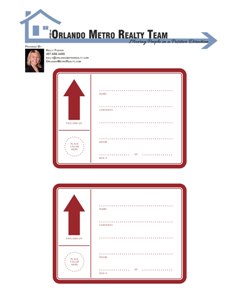An average of one thousand people a day move to Florida with a large percentage of those people moving to Orlando, FL. It’s likely that you, too, will move, at least once in your lifetime. People move for many reasons; they may be selling a home or buying a home, in many cases, their first home—or just moving into their first apartment.
Moving can be stressful, especially if the move is not planned for properly. Personally, I have moved more often than most and am certain I will move again. While starting over in a new home is exciting, the actual packing and moving of your belongings is, by far, the least fun part of moving; however, with proper planning and organization, moving can be a breeze.
Whether you are planning to relocate across the street, or moving across the country, the following tips can help you to have a successful move.
Helpful Downloads:
Click on the links or images below to download
Moving Checklist
Moving Labels Printable
Develop a Plan
First determine the time-frame of the move and decide who will handle the move. You can handle everything yourself, or hire professional movers to pack, transport and unpack everything for you. Many people only hire movers to transport the largest, most awkward items, or pack everything themselves and let the movers simply drive the truck to the new home.
Hiring a Professional Mover
If you are hiring a professional mover, identify several companies and obtain quotes. According to 2012 estimates provided by the American Moving & Storage Association, the average cost of an interstate move is about $4,300, based on an average weight of 7,400 pounds and distance of 1,225 miles.
Most moving companies will provide a binding or nonbinding estimate. A binding estimate is a written agreement made in advance with your mover that clearly describes all services provided. It guarantees the total cost of the move based on the quantities and services written in the estimate.
A non-binding estimate is what the mover believes the cost will be based upon the estimated weight of the shipment and additional services required. However, the final charges are based on the actual weight of your shipment, and the services provided by the movers.
Some movers offer a “guaranteed-not-to-exceed” estimate, which allows the consumer to pay the binding estimate or the actual cost, whichever is lower.
Choosing the Right Moving Company
Ask your family, friends or realtor for a recommendation. Once you have narrowed down the list, be sure that you research those companies to ensure they are legitimate businesses with good reputations. I cannot stress this enough. I have been burned by a moving company who actually stole some of my valuables. Research them online (perform a Google search, check the Better Business Bureau and Angie’s List). I also suggest using a company that uses their own employees. Many fly-by-night movers set up shop and hire sub-contractors with no experience to contract their moves.
Make sure your movers are licensed with the Federal Motor Carrier Safety Administration (FMCSA) or, if applicable, with your state government.
Additionally, you should ask them the following questions:
- How long has the company been in business?
- What are the average years of experience of their drivers, movers and packers?
- Are they licensed with the state’s Department of Transportation?
- Are they licensed for interstate moves?
- Are their workers insured?
Packing Materials
If you are packing yourself, be sure that you have the right packing materials before you start to pack
- Boxes – These can be purchased from your moving company or a packing-supply store; however, you can easily obtain them from a grocery store, office supply store or restaurant or look for them on local groups or Craigslist
- Tape with Dispenser – Each person should have their own dispenser (it speeds up the process immensely). Also, in addition to packing tape, it is helpful to have clear plastic mailing tape for affixing the labels to the boxes.
- Bubble Wrap – In addition to wrapping fragile items, bubble wrap can be used to pad the bottom of boxes to help if they get dropped
- Labels – Helps to easily identify the contents and will save you a lot of time when you are unpacking
- Box Cutters – Helps to quickly open boxes
- Trash Bags
- Newspaper or Packing Paper – Be aware, however, that newspaper can leave ink stains on your valuables
- Permanent Markers – For labeling boxes
- Scissors
- Ziplock Bags – These come in handy for keeping small items together such as screws and other hardware. Be sure to label the bags or affix them to the item they came from (just be careful that the tape doesn’t damage the item you’re affixing them to)
- Stretch Wrap – This is great for securing drawers and doors on dressers and cabinets. Best part is – it leaves no residue and sticks easily to itself
Packing
- Pack one room at a time
- If possible, do not mix things from different rooms – it will make unpacking so much easier
- Try to pack clothes and linens in suitcases
- Use small boxes for heavy items and large boxes for light items. Do not over-pack heavy items. If you can’t easily pick up a box by yourself, it’s probably too heavy
- Place items securely in each box, with the heaviest things on the bottom, and make sure the boxes can close
- Wrap small items in brightly colored paper before you put them in the box, so they don’t get lost or missed when unpacking
- Label each box clearly. Be sure to include; your name, your phone number, the contents, the room it belongs in, an arrow indicating which side is up and mark it fragile if contents are breakable. If possible color code them using labels or different colored markers
- When disassembling furniture, place the hardware in a Ziplock bag and either label the bag and/or affix it to the item of furniture (just be sure the tape cannot damage the surface)
- Do not pack flammables or combustibles, such as; bleach, gas, lighter fluid, etc.
Keep important and valuable items close
Even if you are using professional movers, there are some important items you should keep in your own possession and move yourself. Things such as, toiletries, medications, birth certificates, passports, financial documents, Social Security cards and anything valuable, such as jewelry or irreplaceable heirlooms.
Prepare for your move
Below is a timeline and checklist that will help you prepare for a successful move.
2-3 Months Prior
- Clean and organize! A benefit to moving is usually the cleaning and organizing that takes place before the move. Sort through closets, drawers and cupboards and get rid of things that you no longer want or need. Have a yard sale, donate items to charity or give them away to your family, friends or neighbors.
- Inventory valuable items and determine their replacement values for insurance purposes.
- Obtain estimates from several moving companies, research them and choose one
4-6 Weeks Prior
- Finalize real estate or rental needs
- If moving out of town make travel arrangements
- Notify your children’s schools of the move and contact new schools for enrollment information and instructions
- Ask doctors to recommend doctors in your new location
- Obtain copies of school and medical records and have them transferred
- Consult insurance agents to fond out if policy changes are necessary
3-4 Weeks Prior
- Alert the utility companies to disconnect services the day after your move and connect your new service several days before you arrive. You can ask your realtor for this information, or contact the local chamber of commerce.
- If necessary, arrange for storage in your new community
- If you will be packing your house, order your supplies and start packing
1 Week Out
- If you are packing, it’s time to finish!
- Confirm travel arrangements, if applicable
- Arrange payment or deposit for moving company
- Get cash to have on hand to tip the movers
- Write down (or email) directions to your new home for the moving company, confirm delivery date and be sure they have your cell phone number in case any issues arise
- Complete Change-of-Address forms at the local post office. Notify everyone of your move; family, friends, creditors, banks, magazine and/or newspaper subscriptions, etc.
The Day of the Move
- Final Payment – Have the final payment ready (certified check, cashier’s check, cash or credit card)
- First Night Box – Pack a first night box with essentials you will need in the event you arrive at your new location and your movers don’t or you may just not feel like unpacking
- Basic Tools (Wrench, Hammer, Screwdrivers, etc.)
- Linens for each bed
- Change of clothes for everyone
- Cleaning supplies
- Disposable Plates, glasses and cutlery
- Flashlight
- Light bulbs
- Medicine
- Toilet paper
- Paper towels
- Non perishable snacks
- Toiletries
- Toys for children and pets
- Trash bags
- Inventory – Accompany the mover as they inventory your possessions and note their condition
- Verification – Verify that all of the information is correct and then sign the bill-of-lading
- Last Look – Take one last look to ensure nothing is left behind
- Lock Up – Ensure that all windows and doors are locked and the lights are off
- Say goodbye!
Upon Arrival at Your New Home
- Payment – Have a certified check, cashier’s check, cash or credit card ready for final payment to the moving company. If they only accept cash, note that as a red flag!
- Inventory – Once the driver arrives, he should inventory all of your items, noting the condition they are in. It will be attached to the bill-of-lading or contract. Verify the information and be sure to keep copies.
- Get Help – If possible, enlist the help of friends or family members. As the boxes are brought in, one person can check off the items against the driver’s inventory list and the other can guide the movers to the right rooms. Any damage should be noted on the inventory list.
- Sign-Off – Before the driver leaves, be sure to have him sign the inventory. This will help validate an insurance claim, if necessary.
- Additional Damage – If, while unpacking, you notice something is damaged, leave those items untouched (do not unpack or remove them) until a representative of the moving company can come and inspect them. Additionally, take you can take pictures of the damaged items and timestamp them. You can do this by sending them in an email to the company or to yourself.
- Tools – Have tools ready to reassemble your furniture.
Remember, with some organization and preparation, you move can be a breeze!
Like this Post? Subscribe to our blog
Similar Posts You May Like:
Staging Your Home: How to Prepare Your House for Sale
Real Advice for First Time Home Buyers
What You Should Know About Home Inspections





Pingback: 10 Tips for Spring Cleaning Your Home | My Florida Agent